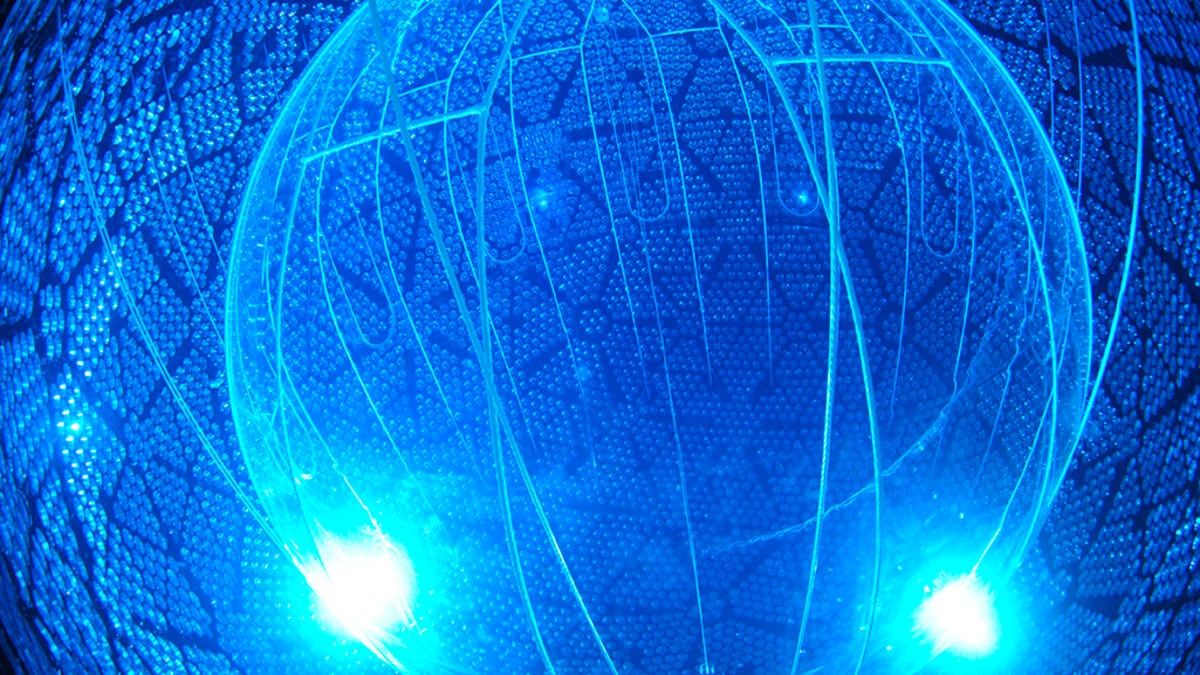Physicists Catch 'Ghost Particles' Bouncing Off Matter in Record-Breaking Experiment

Neutrinos are everywhere. About 100 trillion neutrinos pass through our bodies every second, but they’re so weakly interacting we never notice them. It’s this spooky feature of neutrinos that earned them the nickname “ghost particles.” Antineutrinos, their antimatter counterpart, are also everywhere. Both are notoriously difficult to detect, but physicists are getting better at circumventing their ghostly tendencies, as a recent record-setting measurement demonstrates.
When a low-energy neutrino bounces off the entire nucleus of an atom, the resulting scattering produces sufficient signals for physicists to capture at a nuclear reactor. Using this concept, physicists successfully measured the lowest-ever energy levels recorded in neutrino events, reporting their results in a Nature paper published today. For the experiment, the Coherent Neutrino Nucleus Scattering (CONUS+) collaboration, based in Leibstadt, Switzerland, effectively “hatched” antineutrinos from inside a nuclear reactor.
“This was a big experimental challenge,” Christian Buck, study co-author and physicist at the Max Planck Institute for Nuclear Physics in Heidelberg, Germany, told Gizmodo.
This detector picks up signals from the recoil energy created when antineutrinos bounce off an atomic nucleus. Since matter and antimatter share most fundamental properties, the same measurements can be used to characterize the energy levels of neutrinos. The main detector weighs just 6.6 pounds (3 kilograms), which is tiny compared to typical ton-scale neutrino detectors. Having such a compact neutrino detector offers tantalizing opportunities for more mobile investigations into neutrinos and atomic structures in general, according to the researchers.

Formally, neutrinos bouncing off an entire nucleus is called coherent elastic neutrino-nucleus scattering (CEvNS), first predicted in 1974. Physicists surmised that CEvNS should feature interaction rates 100 to 1,000 times higher than the typical approach of waiting for a neutrino to brush past one of the millions of particles zipping inside giant detectors. In contrast, CEvNS is like “a tiny neutrino giving the nucleus just a gentle bump, like a ping-pong ball hitting a car, and now we have to detect the movement of the car,” Buck explained.
It wasn’t until 2017 that the COHERENT experiment at Oak Ridge National Laboratory confirmed this was possible using a particle accelerator. CONUS+ and its predecessor, CONUS, build on that result with some significant modifications: measuring CEvNS using a nuclear reactor as a source to demonstrate an entirely new interaction channel to study neutrinos.
“For the reactor operators, this is just an unnecessary side product that they do not need to care about,” Buck said. “For us, the reactor is a free, point-like source of the antineutrinos—a reactor like the one in Leibstadt emits 10 to the power of 21 antineutrinos each second! Almost all of them pass matter without any effect (like a ghost), but we try to catch a few of them per day.”
“After two decades of experimental efforts, the search for CEvNS has progressed into the era of precision measurements,” Henry T. Wong, a physicist at the Institute of Physics, Academia Sinica, in Taiwan, wrote in an accompanying News & Views article for Nature. The latest results from CONUS+ will “raise high hopes among neutrino-physics researchers,” Wong, who wasn’t involved in the study, added.
As an important next step, CONUS+ will attempt to increase the precision of its device even further and apply its findings to practical real-world applications. Its unique location inside a nuclear reactor has already garnered interest from major organizations, such as the International Atomic Energy Agency, according to Buck.
“In principle, such a detector can be used to monitor the thermal power or the evolution of the reactor fuel over time,” he explained. “We have now made the first step…but for sure there are still several years and steps ahead of us before the technology is ready for commercial applications.”
More importantly, the new technique may potentially turn up some phenomena at odds with what we know of the Standard Model, Buck said. If so, “this could be a hint that our understanding is not complete and that new particles or so far not-known interactions are at play,” he said.
When I first came across this result, my editor and I had a quick discussion about the nature of antineutrinos. If neutrinos are popularly referred to as “ghost particles,” would that make antineutrinos…anti-ghost particles? What does that even mean?
I had to ask Buck for his thoughts. His answer: “Since antineutrinos are very similar to neutrinos, an antineutrino is more or less like a neutrino in a mirror. I see them in one category. There are conservation laws in physics that allow some reactions only for the one or the other, but they are both of similar importance.”
Though, he added, one hot topic in the field concerns whether there’s a fundamental difference between neutrinos and antineutrinos. If physicists are able to answer this question, perhaps we’ll know for sure if antineutrinos are ghosts in the mirror or (although unlikely) something else altogether.









